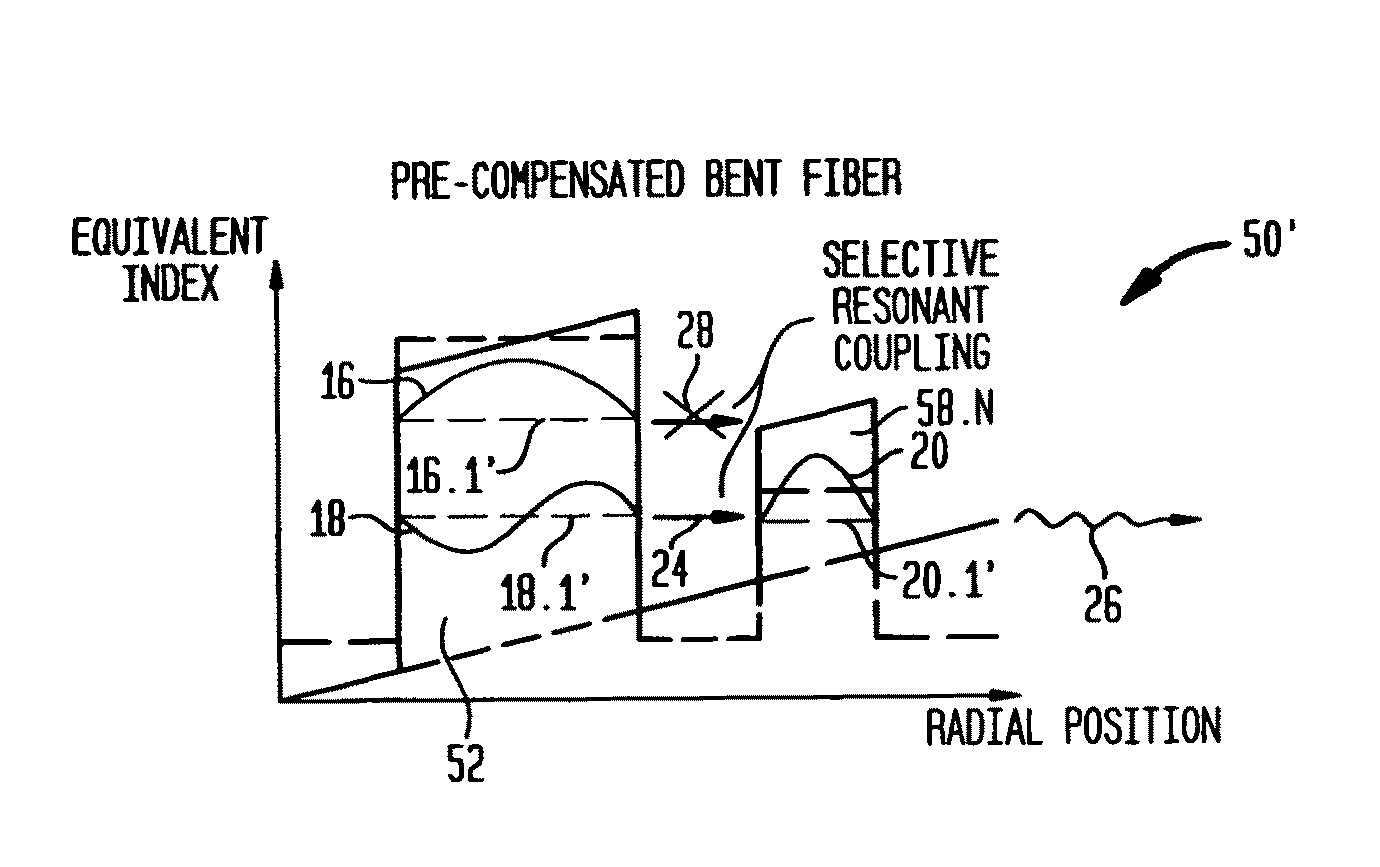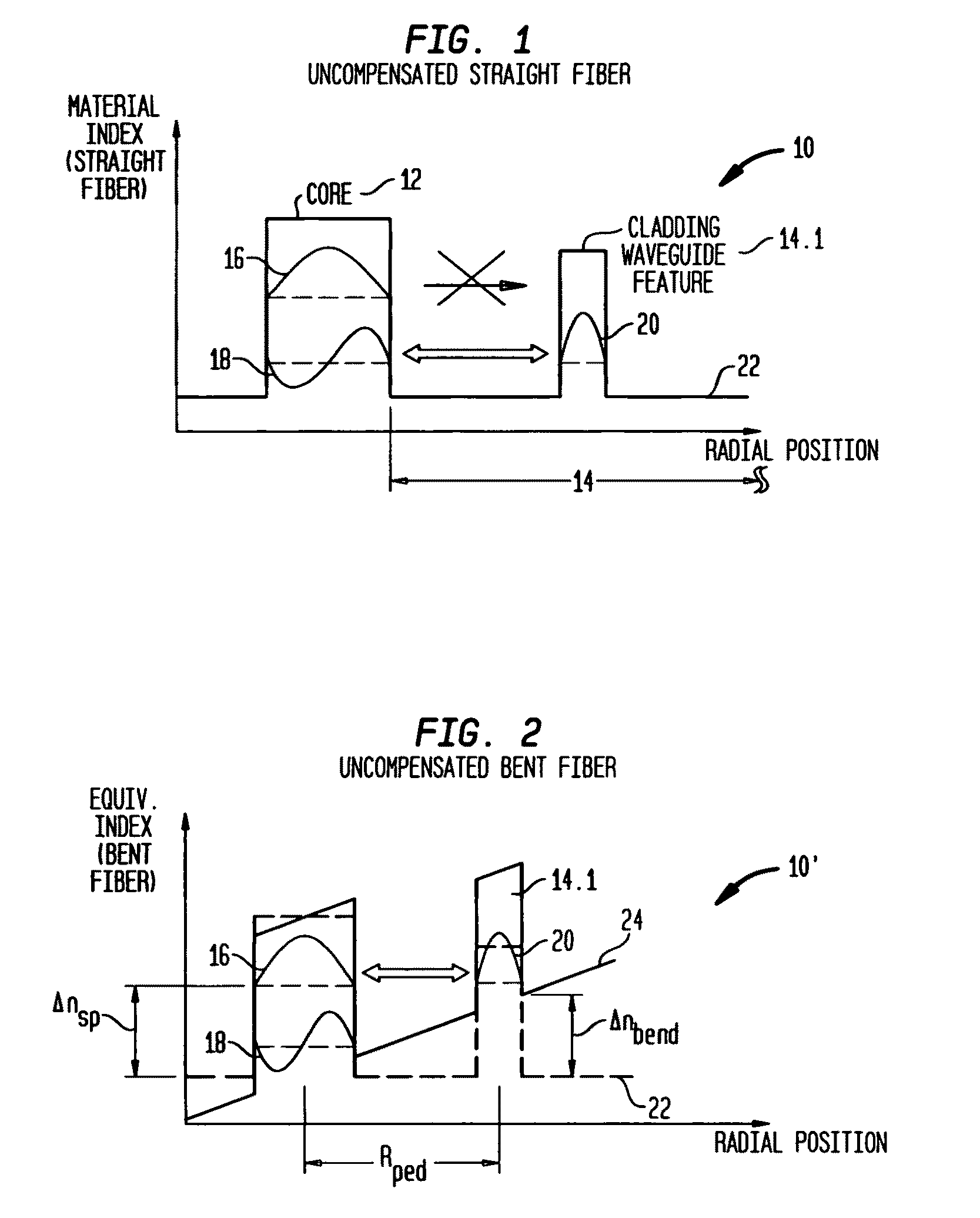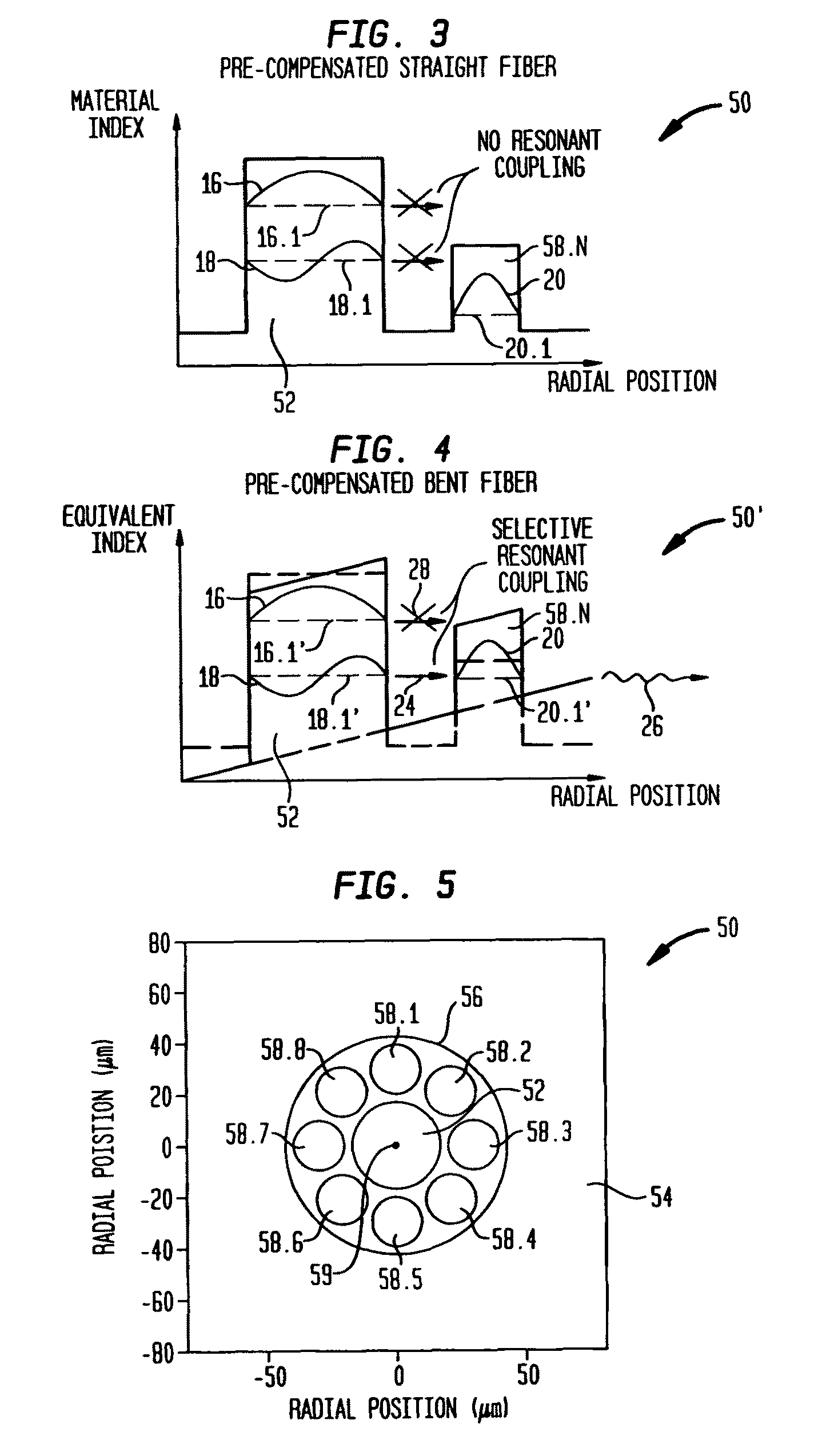Suppression of higher-order modes by resonant coupling in bend-compensated optical fibers
a technology of resonant coupling and optical fiber, which is applied in the field of higher-order mode suppression in optical fibers, can solve the problems of neglecting the impact of bending the fiber on index-matched coupling and frustrating the intended effect, and achieve the effect of suppressing homs
- Summary
- Abstract
- Description
- Claims
- Application Information
AI Technical Summary
Benefits of technology
Problems solved by technology
Method used
Image
Examples
Embodiment Construction
Optical Fiber Design—General Considerations
[0033]The first consideration in pre-compensating fibers in accordance with my invention is to understand when the bend in a fiber, or fiber segment, is sufficiently large to have a significant impact on fiber performance. Thus, returning to FIG. 2, when fiber 10′ is bent to a radius Rbend, the index profile at the center of feature 14.1 increases by an amount Δnbend, but the effective index difference (or spacing) Δnsp of modes 16, 18 remains relatively constant because both modes are centered in the core region. The issue to be addressed is this: When is Rbend so small that selective resonant coupling is disrupted? More specifically, when is Rbend so small that resonant coupling between (i) unwanted HOM 18 and feature mode 20 is disrupted and (ii) fundamental mode 16 and feature mode 20 (or any other mode of feature 14.1) is undesirably introduced? My analysis indicates that Rbend is too small when Δnbend is comparable to Δnsp, as shown i...
PUM
 Login to View More
Login to View More Abstract
Description
Claims
Application Information
 Login to View More
Login to View More - R&D
- Intellectual Property
- Life Sciences
- Materials
- Tech Scout
- Unparalleled Data Quality
- Higher Quality Content
- 60% Fewer Hallucinations
Browse by: Latest US Patents, China's latest patents, Technical Efficacy Thesaurus, Application Domain, Technology Topic, Popular Technical Reports.
© 2025 PatSnap. All rights reserved.Legal|Privacy policy|Modern Slavery Act Transparency Statement|Sitemap|About US| Contact US: help@patsnap.com



